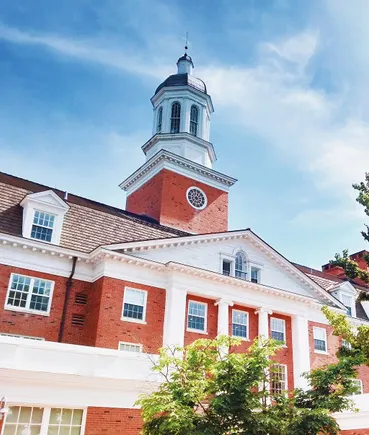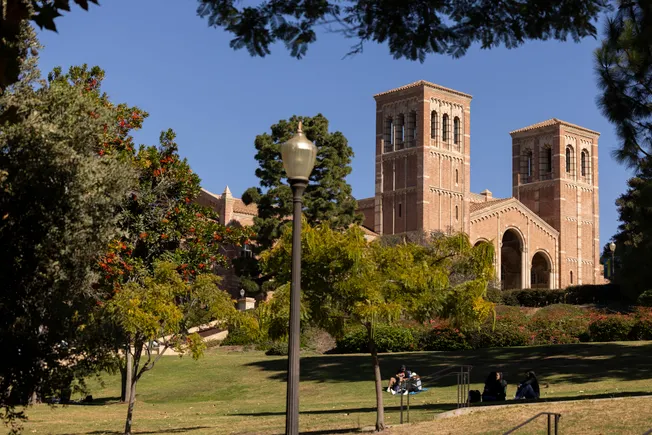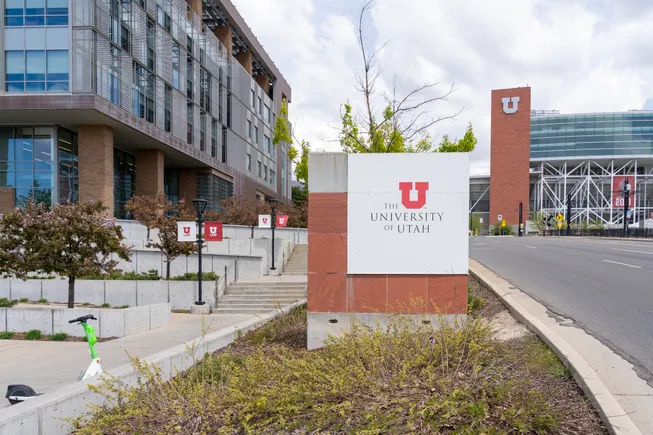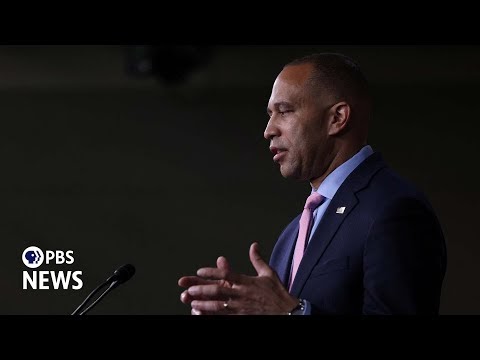In the past, lawmakers have pressured colleges and universities to cut the number of degrees they offer through measures such as publicly criticizing institutions or simply slashing funding and letting institutions figure out where to cut.
But at least three Republican-dominated states—Indiana, Ohio and Utah—passed specific laws this year that push institutions to eliminate degree programs that graduate few students. In a similar vein, Texas passed a law going after academic minors and certificate programs with low enrollments. It worries faculty and scholarly groups, who stress that the number of majors in a program isn’t the only or best way to gauge its worth.
“Campuses are forced to respond to legislative mandates that have arisen from a narrow understanding of what higher education is,” said Paula Krebs, executive director of the Modern Language Association. Students who pursue public higher education will be “getting a reduced version of what a degree should be,” she said.
Robert Kelchen, a professor of higher education at the University of Tennessee at Knoxville, said the move reflects the broader trend of “legislatures getting more involved in academic affairs issues that have historically been either done through shared governance or done through institutional leadership.”
“It’s just another sign that the era of ‘trust the universities, they’re doing the right thing’ has long since passed,” Kelchen said.
And Tom Harnisch, vice president for government relations at the State Higher Education Executive Officers Association (SHEEO), said these laws are “driven in part by the need to direct scarce resources to higher-demand programs in order to meet state workforce needs.” He said some humanities programs may be targeted for political reasons, but the laws are also the latest evolution of a long-standing discussion in higher ed over what programs to offer.
“It’s a very difficult conversation to have, but what we’ve seen over this legislative session is that the state legislators have been more aggressive in trying to shape this conversation,” Harnisch said. “More states have been involved in the inner workings of academia—more so than any time in recent memory.”
Minimum Requirements
Ohio’s sprawling new public higher education overhaul law, Senate Bill 1, mandates a lot—from requiring institutions to post undergraduate course syllabi online to banning diversity, equity and inclusion offices. But amid its pages detailing requirements for faculty evaluations, post-tenure review and more lies a short section that could have an even bigger impact on faculty jobs and which degrees students can pursue.
“A state institution of higher education shall eliminate any undergraduate degree program it offers if the institution confers an average of fewer than five degrees in that program annually over any three-year period,” the law says.
Colleges and universities can appeal to Ohio’s higher education chancellor to save these programs, but even if the chancellor—appointed by the Republican governor—grants a waiver, he gets to set the terms under which the program “may conditionally continue.” Well before SB 1 took effect last month, the University of Toledo announced in April that, in order to comply, it will stop offering bachelor’s degrees in Africana, Asian, Middle East, religious, disability and women’s and gender studies, as well as degrees in Spanish, philosophy and data analytics.
A month after Ohio’s General Assembly passed SB 1 in March, Indiana’s Legislature passed a state budget bill filled with higher ed provisions—including one similar to its Midwest neighbor’s. The Indiana law sets minimum thresholds for different degree programs to avoid termination. Associate programs must graduate an average of at least 10 students annually over three years, while the threshold is 15 students for bachelor’s degree programs, seven for master’s degree programs and three each for education specialist programs and doctorate programs.
While the law, House Bill 1001, says institutions can ask the Indiana Commission for Higher Education for exceptions, that agency said universities already plan to eliminate or consolidate more than 400 programs—roughly one-fifth of their degree offerings statewide. The list of programs being cut at various institutions includes multiple K–12 teacher training programs, foreign languages and Africana, religious and women’s and gender studies degrees, as well as economics, math and electrical, mechanical and computer engineering.
Utah took a more complex, but still blunt, approach. In March, its GOP-controlled Legislature passed House Bill 265, which cut 10 percent of public institutions’ state-funded instructional budgets—$60 million in total. But the law said colleges and universities could win the money back for “strategic reinvestment” in programs based on their enrollment, completion rates and “localized and statewide workforce demands,” among a few other factors.
Last month, the flagship University of Utah, which says it’s shouldering more than a third of the initial $20 million in statewide cuts, announced it’s planning to cut 94 programs across 10 colleges and schools. According to a slideshow posted by the university, the losses will include master’s degrees in Middle East studies, educational psychology, modern dance, audiology, marketing, neurobiology and bioengineering.
To earn back money from the Legislature, the university says it will reinvest in the “high impact” and “workforce-aligned” areas of biotechnology, engineering, “responsible AI,” behavioral health, nursing and simulation, and “civic engagement”—which the presentation described as including “new initiatives focused on American federalism and civic responsibility, and another on civic discussion and debate.”
Utah Valley University, which offers traditional community college programs along with higher-level degrees, said in its presentation that it’s cutting a bachelor’s in aerospace technology management and an associate degree in cabinetry and architectural woodwork, among other offerings. At the same time, it’s reinvesting in an “applied AI institute,” engineering, chemistry, health, accounting, construction management, written communication and more.
In Texas, the Legislature has passed the least direct of the laws targeting programs. Senate Bill 37 doesn’t demand that institutions make cuts to traditional majors, but it requires that they review minors and certificate offerings every five years “to identify programs with low enrollment that may require consolidation or elimination.”
Weeding Out
Mark Criley, a senior program officer in the Department of Academic Freedom, Tenure and Governance at the American Association of University Professors, said the laws are “part of a growing trend among state legislatures to insert themselves in university governance in ways that go beyond their expertise.”
Criley compared these laws—which push program cuts without requiring faculty input on what should be cut—to someone walking into a garden and saying they’re going to pull up every plant under a certain height. He said some of those shorter plants may be important to the health of the whole garden, or “about to bloom into something fantastic.”
“Without the opportunity for faculty involvement, what you’re doing then is, essentially, you’re pulling up all those plants while the gardener’s away,” Criley said. This “blunt instrument we’re talking about here isn’t a way of responsibly ensuring that universities serve their mission to the state.”
But Ohio senator Jerry Cirino, who filed SB 1 and now chairs the state’s Senate Finance Committee, told Inside Higher Ed that circumventing shared governance and faculty unions is part of the law’s point. Shared governance slows changes, he said, and Ohio faculty unions are so committed to protecting their members that they rarely cooperate with institutions trying to cut classes or programs that aren’t graduating enough students in order to justify employing faculty—often tenured faculty.
“How could the faculty be objective when it comes to making decisions that reduce faculty?” Cirino said, adding that more “business principles” should be practiced in universities.
“It’s supply and demand,” he said. “All we’re asking is for our institutions to practice what they teach in their business schools.”
But others criticized using simple metrics such as enrollment and number of graduates to decide which programs should be on the chopping block. Ohio and Indiana’s laws are based on average graduate numbers, while the Texas and Utah laws require institutions to look at enrollment.
“If the major is the coin of the realm, then languages are an easy target,” said Krebs, the Modern Language Association executive director.
Kelchen, the UT Knoxville professor of higher education, said that from a financial standpoint, what really matters is whether classes are full. A program with few majors could still attract students who are earning a minor or taking the classes for other reasons, such as to satisfy general education requirements.
Kelchen and Krebs both pointed out that universities in other states have cut programs even without legislative mandates; they noted West Virginia University, where the administration and Board of Governors ordered degree programs slashed in 2023.
“I think we can trace it back to West Virginia University and before, where it wasn’t a legislative mandate,” Krebs said of cuts to foreign language and other humanities programs.
Harnisch, of SHEEO, suggested it goes back even further, noting “deep program cuts” amid the Great Recession of 2008. Over the past decade, he said, states have tried to keep college affordable, and a growing economy and COVID-19–related aid packages helped.
But now, Harnisch said, multiple financial pressures are leading to “sharper program cuts and tuition increases.” After all, Indiana universities volunteered to eliminate 19 percent of degree offerings without requesting exemptions from the state, according to the Indiana Commission for Higher Education.
“I only see this trend increasing in the years ahead,” he said.










